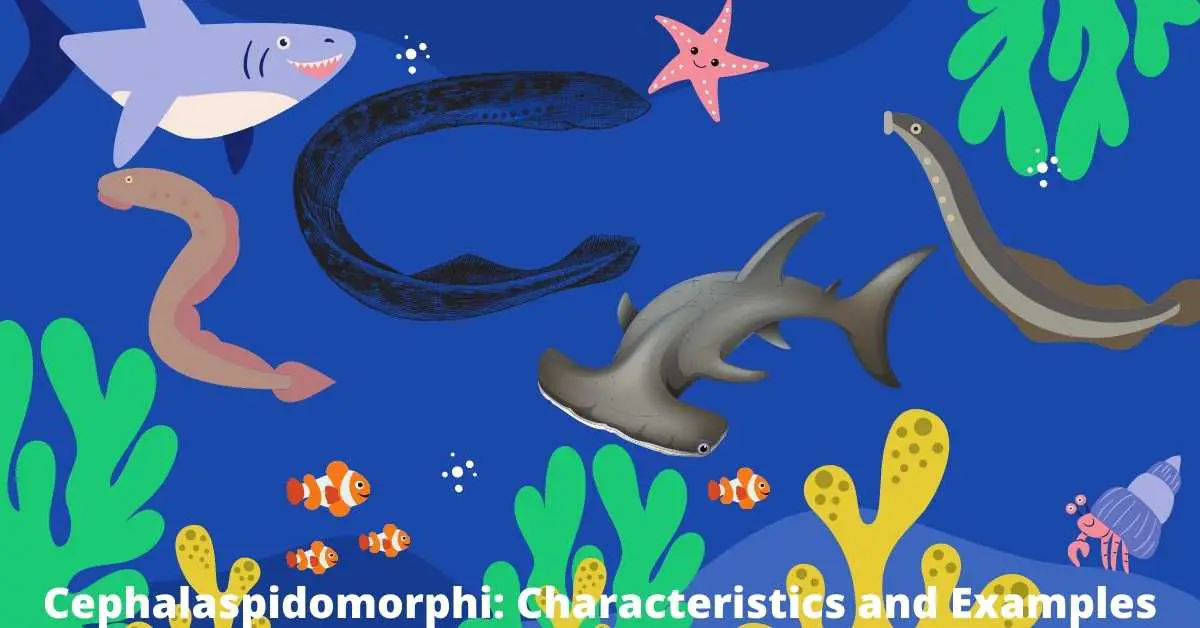Fish is a cold-blooded aquatic vertebrate organism which makes the most diverse and largest taxonomic group. It contains the following four taxonomic classes:
- Myxini
- Cephalaspidomorphi
- Elasmobranchiomorphi, and
- Osteichthyes.
Cephalaspidomorphi (Hagfishes and Lampreys)
The class Cephalaspidomorphi is named after the Greek word kephale = head + aspidos = blade or shield + morphe = form. This class of aquatic animals have no jaws and it was formerly known as Cyclostomata. They are the oldest of the jawless vertebrates. They contain most of the features of other vertebrates. This group has placed apart from others due to the absence of the jaws.
Many of the living creatures in this class prefer to live parasitic lives. These are known as living fossils. Because, from the time of origin, there has not been much structural change in their body. They are known as Lamprey and it was named after Linnaeus.
Classification of Cephalaspidomorphi
In 2003, scientist Hickman, et al. first divided the living jawless animal or Agnatha into two separate classes. One of them is called Myxini and the other is called Cephalaspidomorphi. Previously this two classes belonged to class Cyclostormata and was identified as two subclasses. Although there are evolutionary similarities, there are several fundamental differences between the two classes. So far, 41 species of Cephalaspidomorphi have been identified.
General Characteristics
- Notochord is persistent.
- There are no jaws.
- They have circular sucker like mouth with lots of teeth
- The main axial skeletal system is cartilaginous or fibrous.
- Lampreys have two semi-circular ducts on each side of the head, while hagfish have one semi-circular duct on each side of the head.
- There is no actual gill arch to protect the gills, but the gills, gill arteries, branchial baskets exist outside the branchial nerve; the gills are located in the sac.
- The branchial basket is strongly attached to the skull.
- The paired fins (pectoral and pelvic) are missing.
- A middle nostril exists.
- There is no paired appendages;
- Heart is two-chambered;
- Kidney is mesonephric type;
- Brain with 10 cranial nerves with small cerebellum;
Class Cephalaspidomorphi is divided into two orders. The features and examples of these orders are mentioned below:
Order-1: Petromyzontiformes
This order includes living jawless fish such Lamprey. Lampreys inhabit freshwaters and cool-temperate marine water bodies. Both lamprey and hagfish are primitive eel-shaped cartilaginous fishes. Among lampreys, there are two living families such as Geotriidae (Pouched Lampreys) and Mordaciidae(Short-headed Lampreys). The lampreys have oral disc or sucker-like mouth with horny teeth. The tongue also contains rasping teeth. They also contain one or two dorsal fins and they do not contain scales in their body.
General Characteristics
- Buccal funnels exist.
- The branchial basket exists.
- The development is direct.
- Gill openings seven pairs and separate.
- Eyes are placed laterally on the head;
- It has single and dorsally placed nostril;
- Oral sucker contains horny teeth;
- Tongue contains horny teeth;
- 1-2 dorsal fins;
- This order includes 43 species under 10 genera;
Example: Petromyzon marinus (Lamprey)

Order-2: Myxiniformes
This order contains two primary genera including Eptatretus and Myxine. The genus Eptatretus contains 37 species and they are found in the Pacific ocean while the genus Myxine contains approximately 18 species which are found in the Atlantic ocean. Atlantic hagfishes grow up to 30.7 inches (78 cm) in length but Pacific hagfishes are slightly smaller in length than Atlantic hagfishes which are not exceeding 25.6 inches (65 cm) in length.
In this case, Eptatretus stoutii (Pacific hagfishes) have degenerative eyespots which are covered with thick skin while Myxine glutinosa (Atlantic hagfishes) have more degenerative eyespots than Pacific hagfishes.
General Characteristics
- There is no buccal funnel.
- They do not have pectoral appendages;
- Poorly developed eyes are present;
- Oral tentalcle exists.
- They have no branchial basket.
- 1–16 pairs of external gill openings;
- The gills are exposed outwards through a common duct.
- They have more or less diphycercal caudal fin;
- Primarily bottom-dwelling fishes;
Example: Myxine glutinosa (Hagfish)


